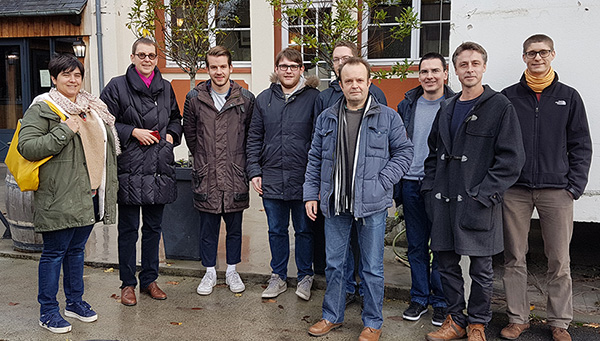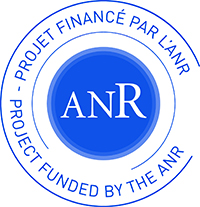
The Snapster project
The SNAPSTER project is a German-French research project financed by the Agence National de la Recherche (ANR, ANR-18-CE92-0026) and the Deutsche Forschungsgemeinschaft.
It aims to tackle key challenges in the field of energy conversion for lighting and optoelectronics. Rare earth oxides (REO) are currently used in these fields and are nowadays considered by EU as strategic minerals for high technology applications like electric vehicles or energy efficient lighting.
As the main natural resources of REO are located outside Europe, there is a real need to develop REO free emissive materials to guarantee energetic independency.
The multidisciplinary SNAPSTER project proposes a new alternative to REO containing emissive materials. SNAPSTER aims to develop new phosphorescent hybrid nanomaterials
and introduce them in optoelectronic devices to evaluate their potential in terms of applicative prospects. On one hand, An[M6Qi8Xa6]
(A = alkali, Q = chalcogen/halogen, X = halogen, M = Mo, Re) metal cluster compounds, obtained by high temperature synthesis, are very attractive for light emitting devices:
they are highly luminescent in the red NIR and are very robust in contrast to organic dyes which suffer from photochemical,
thermal or oxidative decomposition. On the other hand, molecular self-assembling is a promising way to generate nanostructured hybrid materials where functionalities are given
by inorganic moieties while the structuration is mainly directed by the organic counter-part. In that way, columnar liquid crystals (LCs) are of great interest for
the design of smart materials: they are easy to process, show self-organizing and structural defects self-healing abilities as well as high charge carrier mobility.
Yet, one of the main challenge to overcome in hybrid materials is to prevent phase segregation between the organic and inorganic moieties.
The SNAPSTER project aims to introduce metal clusters in columnar LCs by taking advantage of the ability of LC crown ether derivatives to complex the alkali ions contained
in the metal cluster compounds. The convergent synthesis of these hybrid materials via coordination chemistry will give a rapid access to a library of related materials
for investigation of structure-property relationships and charge transport evaluation.
SNAPSTER involves permanent staff members but also a Post-doctoral fellow, a PhD student and Master students who will share their time between France and Germany.
Three partners are participating to this 36 Months project:
The Pr. S. Laschat Research Group from the Organic Chemistry Department of the University of Stuttgart
The CSM team of the Institute of Chemical Sciences of Rennes
The Microelectronics and microsensors group of the Institute of Electronic and Telecomunication of Rennes
News
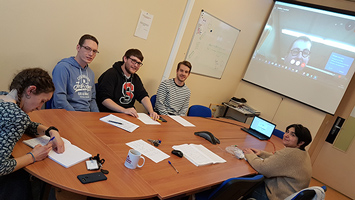
S. Laschat (on the screen !) and C. Roiland
28/11/2019
Steering meeting at ISCR during the stay of P. Ehni, M. Ebert and J. Knelles who spent two weeks in Rennes performing emission studies.
01/09/2019
Welcome to Irene Carrasco Ruiz who joined the consortium as a Post doctoral research fellow to work on the synthesis of hybrids, emission studies and charge transport measurements.
She will share her time between ISCR and IETR for the next two years.
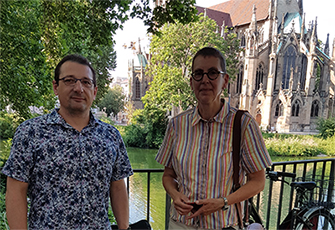
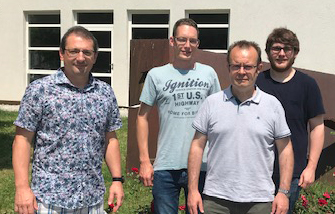
27/06/2019
First visit of ISCR team to Stuttgart to discuss about progress made on the chemistry part during the first six months.
After a steering meeting in the morning, S. Cordier and Y. Molard gave a seminar in the chemistry department in the afternoon.
'Metal clusters: from solid chemistry to hybrid nanomaterials'
S. Cordier
'Soft materials containing emissive metal clusters : when supramolecular chemistry meets solid state chemistry'
Y. Molard
03/12/2018
Presentation of the project in Paris in front of the ANR commitee.
29/11/2018:
The project is launched. All partners participated to the first meeting held in Rennes at ISCR.